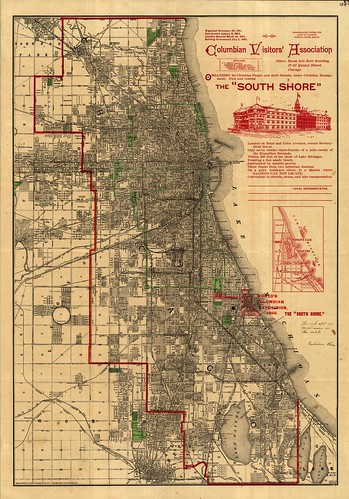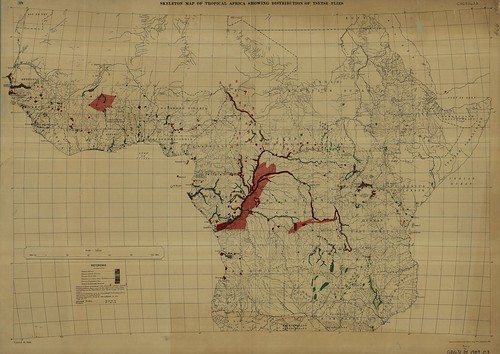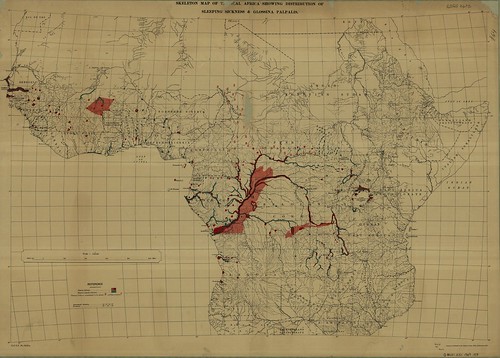The above map was modified to give visitors to the Worlds Columbian Exposition of 1893(A.K.A. The Worlds Fair) a guide to the city of Chicago and a subtle suggestion as to where to lodge, especially for the Christian visitors.
Notable locations on the map in regard to the Worlds Fair of 1893 are indicated by a red hashed area located in the southeast portion of the map. Details of the Columbian Visitors’ Association’s “South Shore” building and it’s location in relation to the World’s Fair Grounds are illuminated by an inset map set in Lake Michigan.
 Above and Below: World’s Fair Grounds 1893
Above and Below: World’s Fair Grounds 1893

 The “South Shore” Columbian Visitors Association
The “South Shore” Columbian Visitors Association
PARKS:
Some well known parks include Lincoln Park and Lake Park.


Left: Lincoln Park, Right: Lake Park
Lake Park, now known as Grant Park was officially named as a park in 1844. Grant Park contains and links many famous Chicago attractions and events. Most notable is the Buckingham Fountain pictured below.
Connected to Grant Park in the northwest corner is Millennium Park which hosts concerts and other events. Millennium Park is also the home of the sculpture Cloud Gate, affectionately referred to as “The Bean” by locals.
 Institutions located within close proximity to Grant Park include:
Institutions located within close proximity to Grant Park include:
- Adler Planetarium & Astronomy Museum
- Field Museum of Natural History
- The Shedd Aquarium
- The Art Institute of Chicago
Two of Jeff’s favorite events also take place at Grant Park:
- The Taste of Chicago – Usually around the week of the 4th of July.
- The Chicago Marathon – This year the start will take place October 11, 2009 at 7:30 a.m. Click here for the course map!
CEMETERIES:
Also noted on the map in the same shade of green as the parks are cemeteries within the city limits. These include:
founded 1854

Rosehill Cemetery
founded 1859

Finally, there is one last feature on this map that I’d like to illuminate and share. The Union Stock Yards of Chicago, the source of inspiration for The Jungle published by Upton Sinclair in 1906.
 Chicago has a long and interesting history, but this weeks map only provides a snap shot of the city in 1890. Hopefully I’ve covered some of the more interesting features, but I’m sure I’ve missed a multitude of fascinating stories and facts. Please feel free to take up where I’ve left off, there are many more parks, cemeteries, and places of interest left on the map to explore!
Chicago has a long and interesting history, but this weeks map only provides a snap shot of the city in 1890. Hopefully I’ve covered some of the more interesting features, but I’m sure I’ve missed a multitude of fascinating stories and facts. Please feel free to take up where I’ve left off, there are many more parks, cemeteries, and places of interest left on the map to explore!









